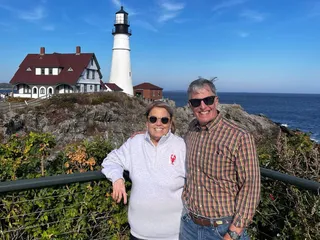Queen Bess, Learning to Fly Without Brakes
Contact Our Team
For more information about how Halldale can add value to your marketing and promotional campaigns or to discuss event exhibitor and sponsorship opportunities, contact our team to find out more
The Americas -
holly.foster@halldale.com
Rest of World -
jeremy@halldale.com

In honor of Black History Month, CAT pays tribute to Bessie Coleman, the first Black person to obtain an official Federation Aeronautique Internationale (FAI) pilot license and first African American woman to obtain a pilot license.
Coleman had moved to Chicago to live with her brother in the 1915-20s, where she worked as a manicurist at a barbershop on the south side of the city. Her brother John began to taunt her about her job, while inspiring her to strive for something more. His time serving in WWI had shown him the vast opportunities women were given in France, as opposed to the limitations put on women in the United States. French women were so "liberated”, they could even fly planes, John said.
While she aspired to fly, American flight schools were not admitting either African Americans or women. She had reached out countless times to instructors for pilot lessons, but no one would accept her as a student. With the limited opportunities the US offered, Robert Abbott, the publisher and founder of the African American newspaper Chicago Defender, persuaded her to travel to France to learn how to fly, where there would be more opportunity for her career to begin.
Coleman began taking French language classes and saving money for her trip. The Chicago Defender became a sponsor for her career, and in November 1920 she booked her trip to France. She was accepted into the Chaudron flight school at Le Crotoy in the Somme. She learned to fly on the Nieuport 564 biplane – known to fail frequently, even in the air – during the course of seven months.
According to the New York Times, the aircraft Coleman trained on did not have a steering wheel or brakes. The instructor and Coleman each had their own cockpit and would have to control the plane’s pitch and roll with a large wooden stick and its yaw with a rudder ball underfoot. To stop the plane, the pilot would have to land, and the metal skid attached to the underside of the tail would drag on the ground until it finally halted.
Coleman received her pilot license from the FAI on 15 June 1921. She returned to the US in September 1922, fueled with the goal of establishing a flying school for African Americans.
She made her first appearance at an American airshow, which was the first public flight by an African American woman.
She was known to dazzle onlookers with her maneuvers, such as walking on the aircraft’s wings or parachuting from a plane, and was referred to as Queen Bess and Brave Bessie. She was dedicated to combatting racism, influencing audiences across the US to promote aviation for Black people. “The air is the only place free from prejudice,” said Coleman.
Though she passed tragically during a flight test in 1926, Bessie Coleman continues to inspire generations today.


